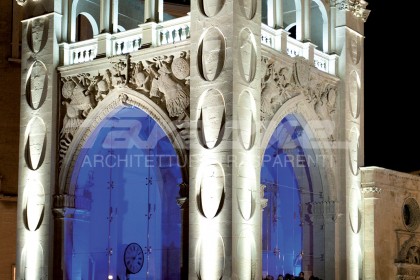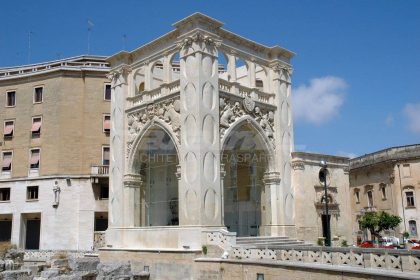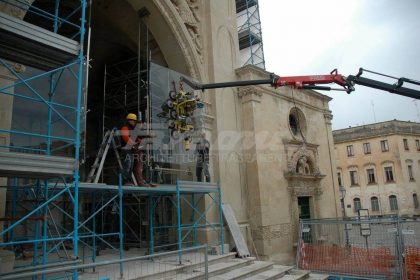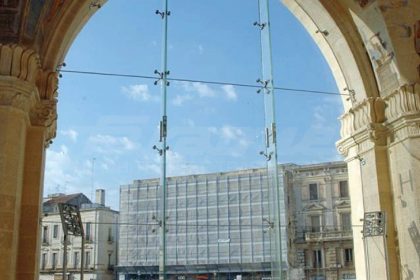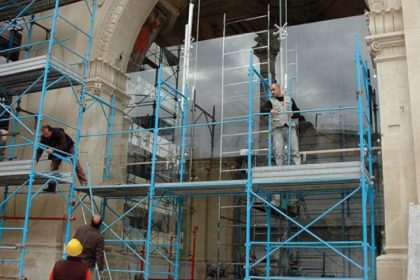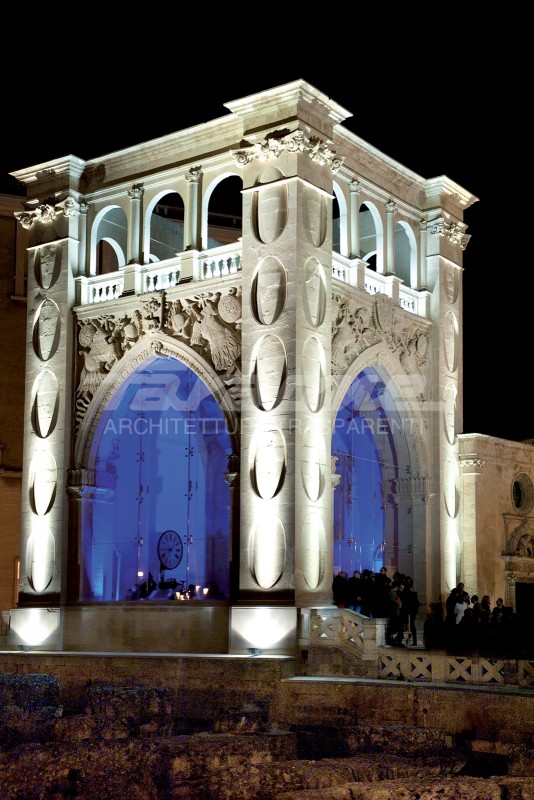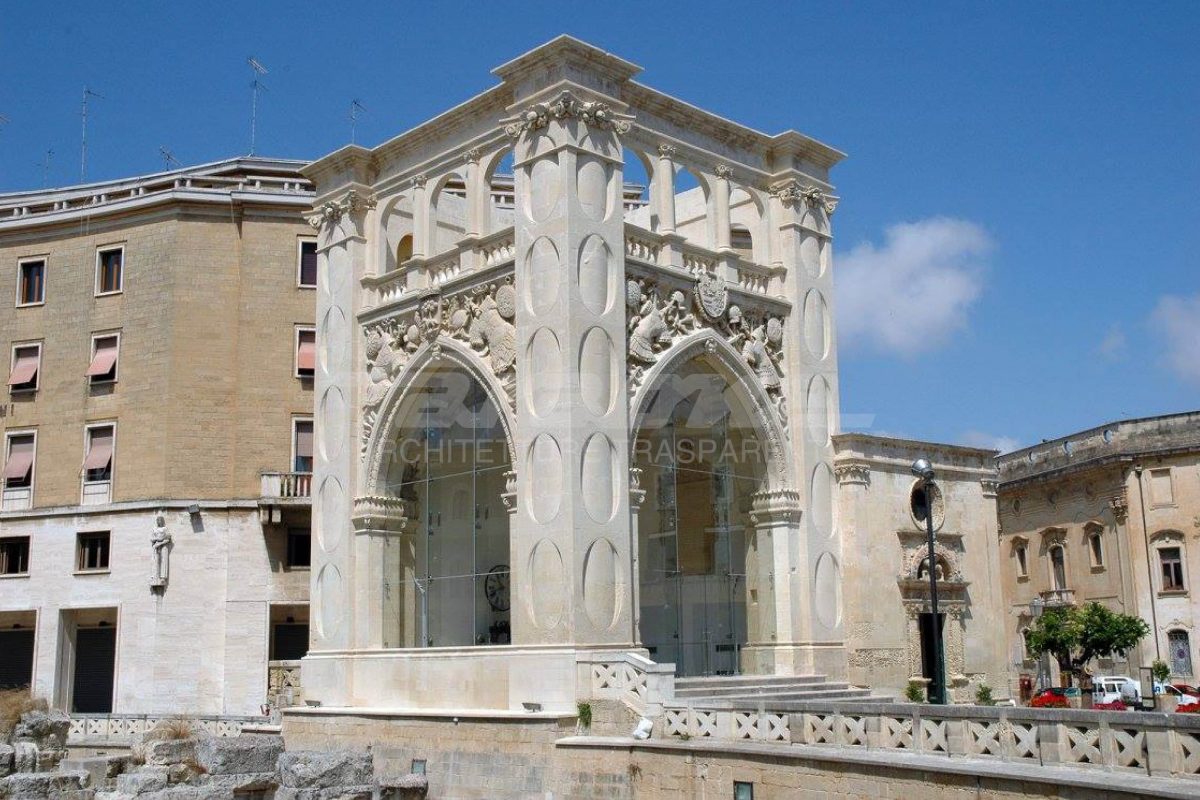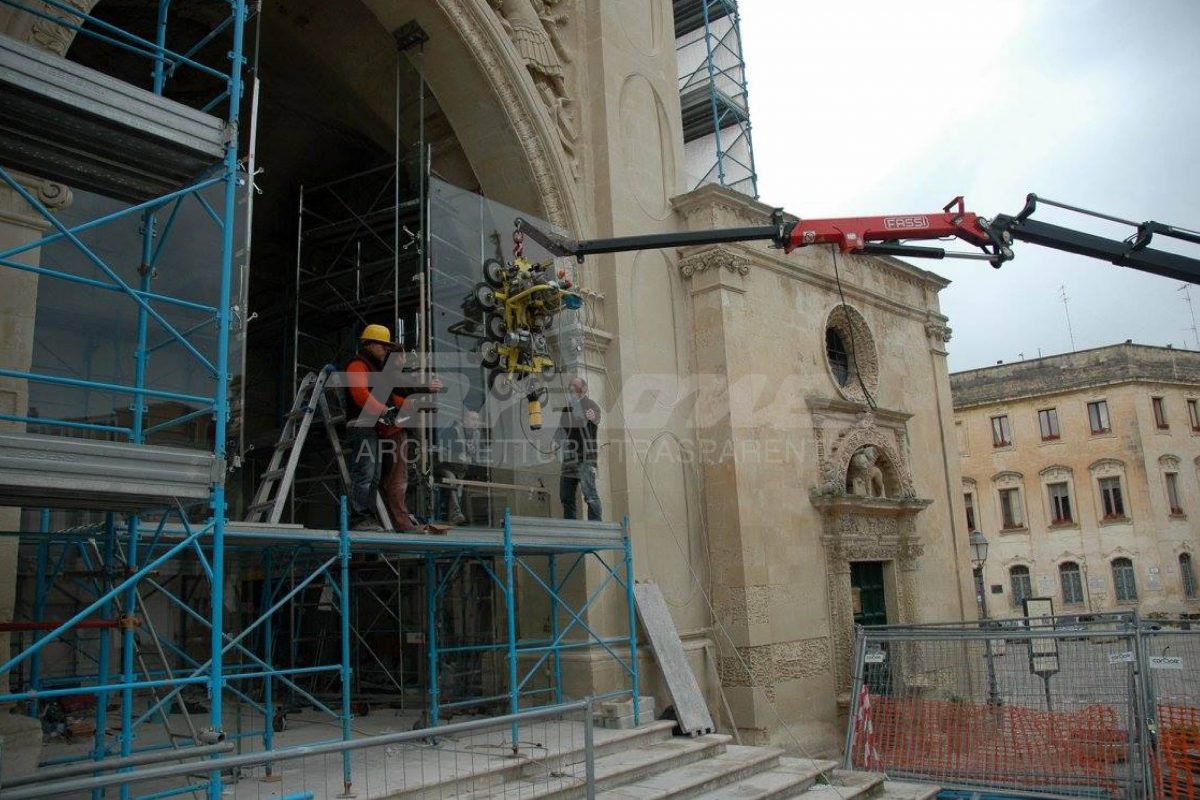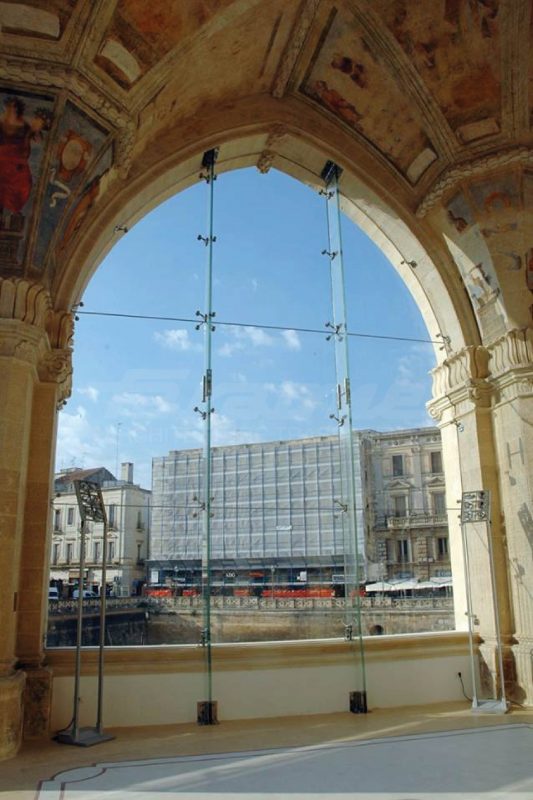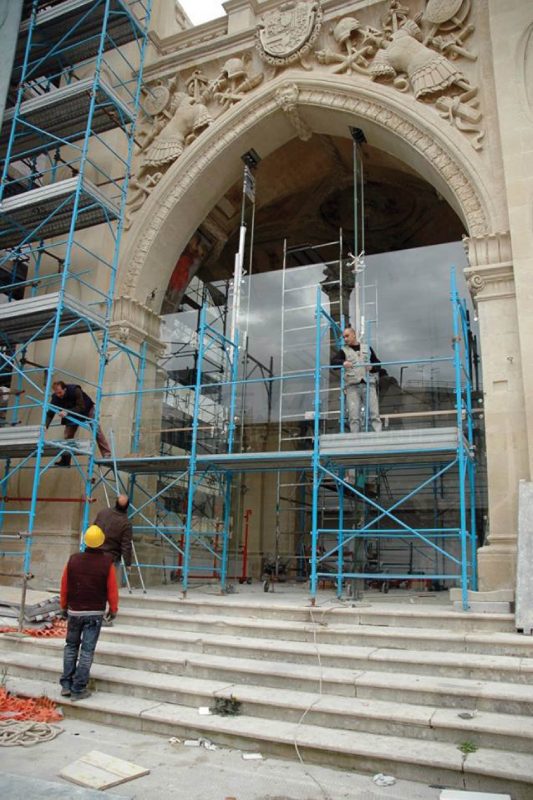Palazzo del Seggio or Seat of Lecce.
The Seat is one of the main monuments that symbolizes the identity and history of the City of Lecce.
This work is an example of how point fixing applied to glass panels can preserve historic buildings.
Together with Vetreria Calasso, we have contributed to a lightening operation thanks to the replacement of previous glazed windows with a Glassfin solution. The glass walls are supported by glass pillars connected to each other through stainless steel accessories.
The integration of the door was made possible thanks to the innovative systems fixed directly on the facade.
The result is enchanting both during the day, where maximum transparency stands out, and at night, where the lighting effects make the Seat of Lecce look even more magical.
The restoration of the Seat of Lecce was awarded as the best in 2011.
Historical background
“The building was built in 1592 on behalf of the then Venetian mayor Pietro Mocenigo, to replace the previous one demolished in 1588.
The structure, an interesting mixture of Gothic and Renaissance spirit, is characterized by four pillars pierced by ovolo mouldings that allow the glimpse of a column, among which there are large pointed arches surmounted by loggias and decorated with trophies. The type of corner pillar recalls the model most likely conceived by Gabriele Riccardi: the same pillar can be seen, in fact, even at the corner of the right side of the Basilica of Santa Croce in Florence. In ancient times, as observed in vintage prints of the square, the building was also completed by a clock surmounted by two statues.
Next to it is the church of San Marco.
The Seat was used in the past for various institutional uses and as a place for exhibitions. Until 1851 it was the Town Hall of the city, while today it is once again used for art expositions and fairs.”
(source: Wikipedia)


